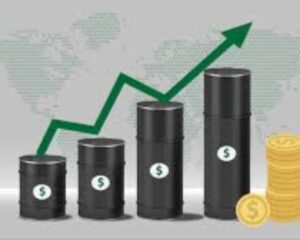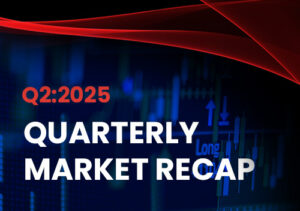Markets are staying pretty calm, but we’ve still got a few weeks of trade noise ahead
So, a quick catch-up: back in April this year, Trump announced a big set of tariffs, some up to 49% on a bunch of countries. It caused a major panic in the markets at the time (like a $3 trillion drop in value the next day). But then he paused everything for 90 days to give countries a chance to negotiate new trade deals. That pause was supposed to end on July 9, which brought us to this week.
What’s changed now?
On July 7, Trump pushed the deadline out to August 1. He also sent formal letters to 14 countries (including Japan, South Korea, and South Africa), warning that tariffs between 25% and 40% would kick in if they don’t strike a deal by then. The White House called it a move toward “reciprocal trade,” basically saying the U.S. is just matching what other countries charge on American goods.
At the same time, Trump made it clear that things are still flexible. He said if a country lowers its own tariffs, the U.S. might lower its rate too. And while he called August 1 a hard deadline, he also said it’s “not 100% firm”, which is kind of classic Trump.
Who’s already done deals?
So far, three main countries have locked in agreements:
- UK – They got a deal that lowers U.S. tariffs on British cars and removes them on aerospace parts.
- China – There’s a partial truce. U.S. tariffs are now capped at 55%, China’s at 10%, and both sides relaxed some export controls.
- Vietnam – Instead of the original 46% tariff, they negotiated it down to 20%, plus agreed to stricter rules on rerouting goods through their country to dodge tariffs.
Others like India, the EU, and Canada are still negotiating. Canada’s deal is expected by July 21. Japan and South Korea got warning letters, but talks are ongoing.
How did markets react?
Honestly, not much drama. The S&P 500 dipped about 1% on July 7 but bounced back quickly. Stocks in Japan and South Korea did take a hit, especially carmakers, but nothing too wild. The U.S. dollar strengthened, while currencies like the Australian and New Zealand dollars dipped (since those economies rely a lot on trade with Asia).
Analysts think markets are kind of used to this by now. The real tariff rates in play are way lower than what was originally floated, and with some deals already in place, most traders expect more compromises before August.
What’s next?
Between now and August 1, we’ll probably see more headlines, last-minute trade announcements, and a few tense press briefings. Whether Trump follows through or delays again, who knows – but investors are staying alert without hitting the panic button (yet).




